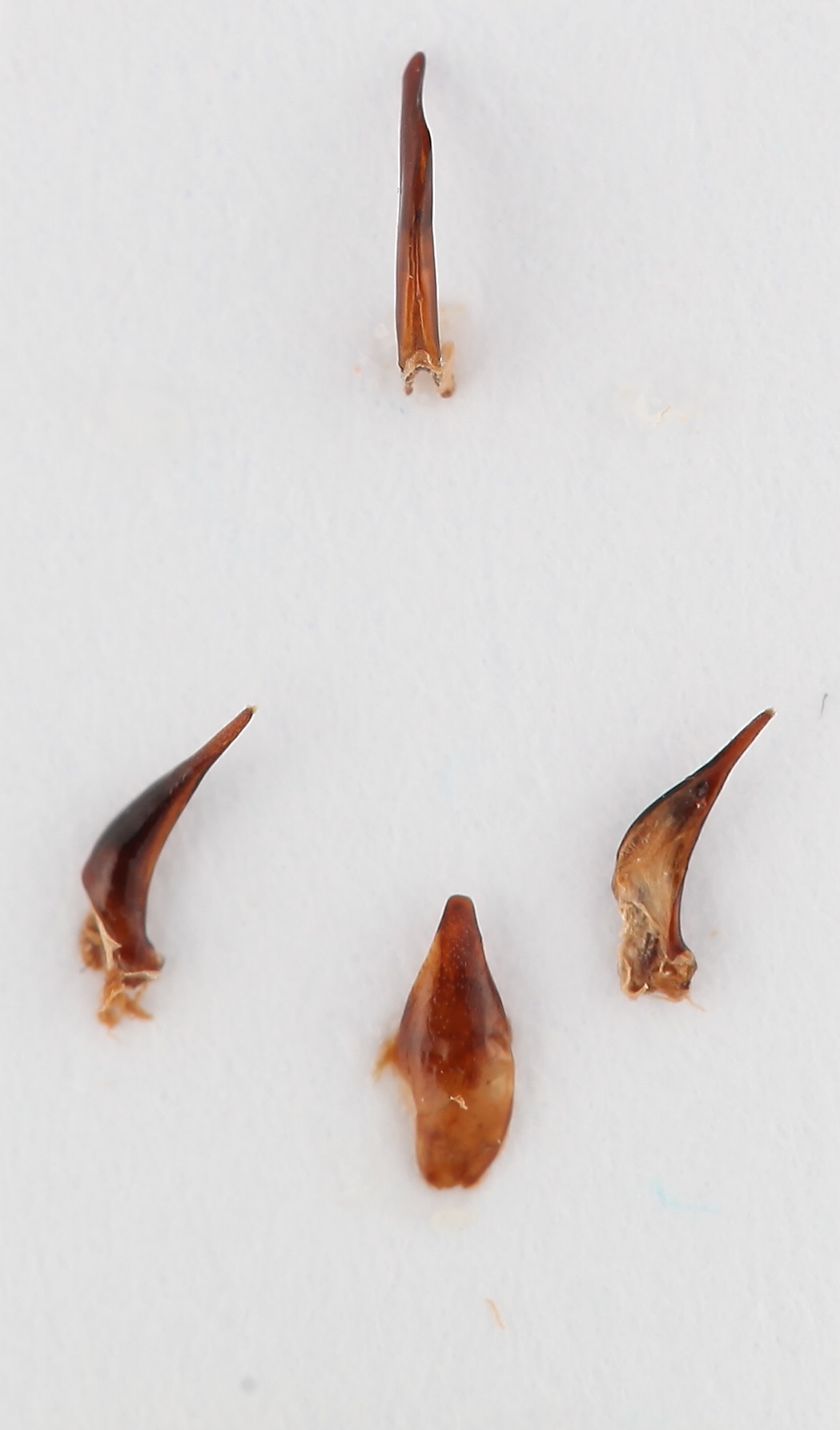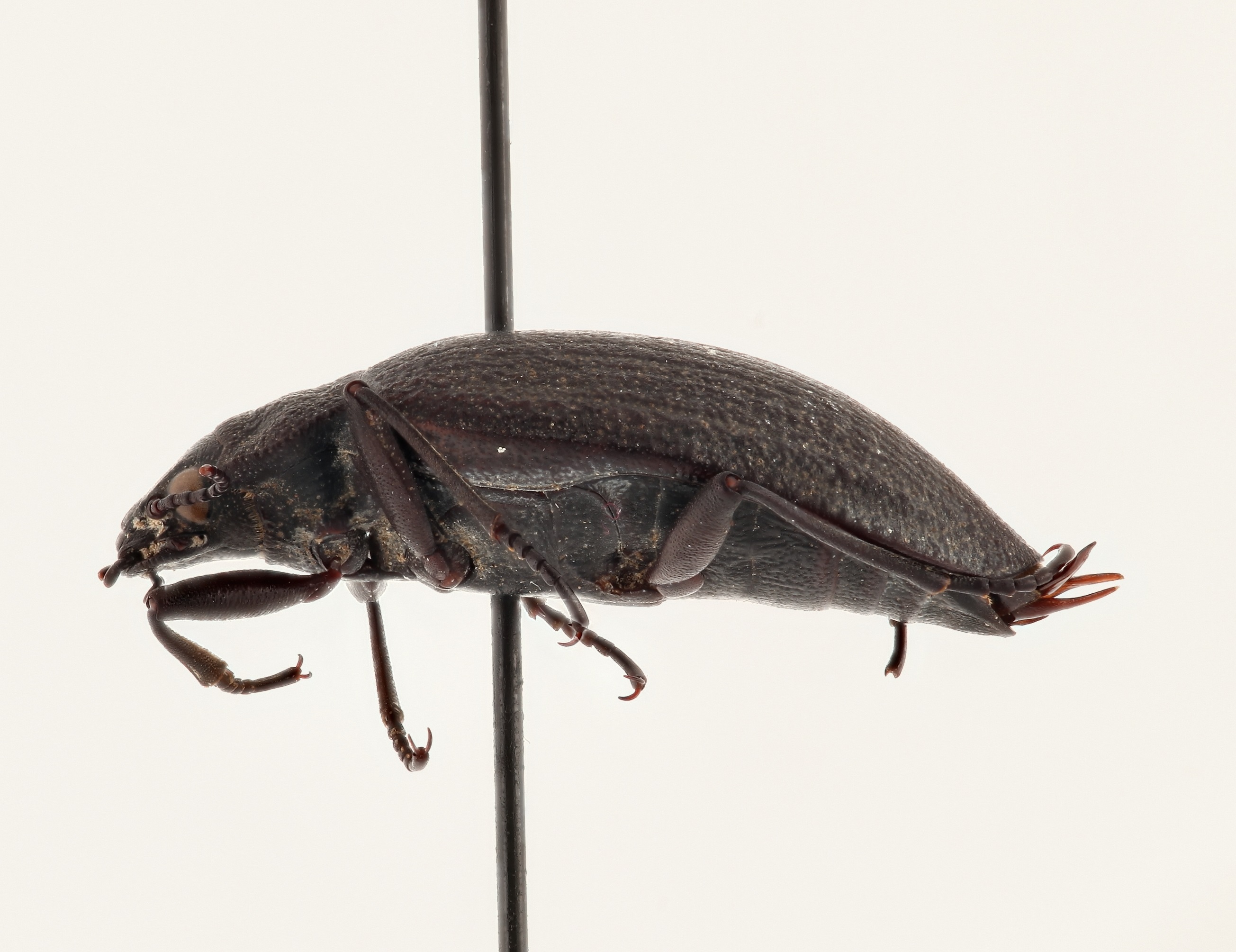Amphizoidae on:
[Wikipedia]
[Google]
[Amazon]
''Amphizoa'' is a
Illinois Natural History Survey. There are five known species of ''Amphizoa'', three in western North America and two in the eastern




''Amphizoa insolens''.
California Beetles Project.
genus
Genus (; : genera ) is a taxonomic rank above species and below family (taxonomy), family as used in the biological classification of extant taxon, living and fossil organisms as well as Virus classification#ICTV classification, viruses. In bino ...
of aquatic beetle
Beetles are insects that form the Taxonomic rank, order Coleoptera (), in the superorder Holometabola. Their front pair of wings are hardened into wing-cases, elytra, distinguishing them from most other insects. The Coleoptera, with about 40 ...
s in the suborder Adephaga
The Adephaga (from Greek ἀδηφάγος, ''adephagos'', "gluttonous") are a suborder of beetles, and with more than 40,000 recorded species in 10 families, the second-largest of the four beetle suborders. Members of this suborder are collecti ...
, placed in its own monogeneric family
Family (from ) is a Social group, group of people related either by consanguinity (by recognized birth) or Affinity (law), affinity (by marriage or other relationship). It forms the basis for social order. Ideally, families offer predictabili ...
, Amphizoidae.''Amphizoa'' LeConte 1853.Illinois Natural History Survey. There are five known species of ''Amphizoa'', three in western North America and two in the eastern
Palearctic
The Palearctic or Palaearctic is a biogeographic realm of the Earth, the largest of eight. Confined almost entirely to the Eastern Hemisphere, it stretches across Europe and Asia, north of the foothills of the Himalayas, and North Africa.
Th ...
.Nilsson, Anders N., and Bernhard J. van Vondel (2005), World Catalogue of Insects. Volume 7: Amphizoidae, Aspidytidae, Haliplidae, Noteridae and Paelobiidae (Coleoptera, Adephaga) They are sometimes referred to by the common name troutstream beetles.
Description
Troutstream beetles have a characteristic appearance. They are relatively large, oval, slightly convex, dull black to piceus. Body length ranges between . The head is broad with a quadrate shape and small round eyes. The antenna is filiform, rather short with 11 segments. The pronotum is significantly narrower than the elytra and with lateral margins slightly crenulated; the prosternal processes are broad and flat, rounded to truncate at the apex; theelytra
An elytron (; ; : elytra, ) is a modified, hardened forewing of beetles (Coleoptera), though a few of the true bugs (Hemiptera) such as the family Schizopteridae are extremely similar; in true bugs, the forewings are called hemelytra (sometime ...
are vaguely striate and have a series of short spines of unknown function.Kavanaugh, D. H. (1986) A systematic review of amphizoid beetles (Amphizoidae: Coleoptera) and their phylogenetic relationships to other Adephaga. ''Proceedings of the California Academy of Sciences'', vol. 44, no. 6 The legs are not well adapted for swimming, and lack long swimming setae. The hind coxae extend to the lateral margin of the abdomen and the tarsal formula
A tarsal formula states the number of segments of an insect's tarsi as three numbers, a-b-c, starting with the fore leg (a), then the middle leg (b), then the hind leg (c). For example, a tarsal formula of "5-5-4" as found in the Trictenotomid ...
is 5-5-5.Dettner, K. 2005: 7.4. Amphizoidae LeConte, 1853. Pp. 81-85 in: Beutel, R.G.; Leschen, R.A.B. (volume eds.) Coleoptera, beetles. Volume 1: Morphology and systematics (Archostemata, Adephaga, Myxophaga, Polyphaga partim). In: Kristensen, N.P. & Beutel, R.G. (eds.) ''Handbook of Zoology. A Natural History of the Phyla of the Animal Kingdom. Volume IV. Arthropoda: Insecta.'' Part 38. Berlin, New York: Walter de Gruyter.


Known species of ''Amphizoa''
The genus ''Amphizoa'' contains the following known species: *'' Amphizoa davidis'' *'' Amphizoa insolens'' *'' Amphizoa lecontei'' *'' Amphizoa sinica'' *'' Amphizoa striata''Biology
Troutstream beetles can be found in streams and rivers in mountain regions of China, North Korea and western North America. Streams are often cold and medium to fast flowing, and the beetles can be found clinging to rocks, woody debris or at margins. Both adults and larvae are predators, especially on stonefly larvae but occasionally on other aquatic insects. Larvae may also scavenge dead insects.''ITIS: The Integrated Taxonomic Information System''. Orrell T. (custodian), 2011-04-26 When disturbed, adults exude a yellowish fluid from theanus
In mammals, invertebrates and most fish, the anus (: anuses or ani; from Latin, 'ring' or 'circle') is the external body orifice at the ''exit'' end of the digestive tract (bowel), i.e. the opposite end from the mouth. Its function is to facil ...
, with an odor described as that of cantaloupe
The cantaloupe ( ) is a type of true melon (''Cucumis melo'') with sweet, aromatic, and usually orange flesh. Originally, ''cantaloupe'' refers to the true cantaloupe or European cantaloupe with non- to slightly netted and often ribbed rind. ...
or decaying wood, probably as a defense mechanism against predators like frog
A frog is any member of a diverse and largely semiaquatic group of short-bodied, tailless amphibian vertebrates composing the order (biology), order Anura (coming from the Ancient Greek , literally 'without tail'). Frog species with rough ski ...
s and toad
Toad (also known as a hoptoad) is a common name for certain frogs, especially of the family Bufonidae, that are characterized by dry, leathery skin, short legs, and large bumps covering the parotoid glands.
In popular culture (folk taxonomy ...
s.
Phylogeny and evolution
Amphizoidae share someplesiomorphic
In phylogenetics, a plesiomorphy ("near form") and symplesiomorphy are synonyms for an ancestral character shared by all members of a clade, which does not distinguish the clade from other clades.
Plesiomorphy, symplesiomorphy, apomorphy, an ...
features with Carabidae
Ground beetles are a large, cosmopolitan family of beetles, the Carabidae, with more than 40,000 species worldwide, around 2,000 of which are found in North America and 2,700 in Europe. As of 2015, it is one of the 10 most species-rich animal ...
, such as slender ambulatory legs, and other characteristics with Dytiscidae
The Dytiscidae, from the Ancient Greek word δυτικός (''dystikos''), meaning "able to dive", are the predaceous diving beetles, a family of water beetles. They occur in virtually any freshwater habitat around the world, but a few species l ...
, such as large sensorial lobes on the epipharynx. In an analysis based on the genes 18S rRNA
18S ribosomal RNA (abbreviated 18S rRNA) is a part of the ribosomal RNA in eukaryotes. It is a component of the Eukaryotic small ribosomal subunit (40S) and the cytosolic homologue of both the 12S rRNA in mitochondria and the 16S rRNA in plas ...
, 16S rRNA
16S ribosomal RNA (or 16Svedberg, S rRNA) is the RNA component of the 30S subunit of a prokaryotic ribosome (SSU rRNA). It binds to the Shine-Dalgarno sequence and provides most of the SSU structure.
The genes coding for it are referred to as ...
and cytochrome oxidase I, Amphizoidae was placed as a sister group
In phylogenetics, a sister group or sister taxon, also called an adelphotaxon, comprises the closest relative(s) of another given unit in an evolutionary tree.
Definition
The expression is most easily illustrated by a cladogram:
Taxon A and ...
of a clade comprising the newly described family Aspidytidae, Paelobiidae(=Hygrobiidae) and Dytiscidae.Ribera, I., Hogan, J. H. & Vogler, A. P. 2002. Phylogeny of Hydradephagan water beetles inferred from 18S rDNA sequences. ''Mol. Phyl. Evol''. 23, 43–62. An analysis based on a morphological character matrix also came to this conclusion.Beutel, R., Balke, M., and Steiner, W. E. 2006. The systematic position of Meruidae (Coleoptera, Adephaga) and the phylogeny of the smaller aquatic adephagan beetle families. ''Cladistics'' 22(2) 102–131. However, two other studies with more genes have placed Amphizoidae as sister group to Aspidytidae.Balke, M., et al. 2008. Systematic placement of the recently discovered beetle family Meruidae (Coleoptera: Dytiscoidea) based on molecular data. ''Zoologica Scripta'', 37, 647–650.Balke, M., Ribera, I. & Beutel, R. G. 2005. The systematic position of Aspidytidae, the diversification of Dytiscoidea (Coleoptera, Adephaga) and the phylogenetic signal of third codon positions. ''Journal of Zoological Systematics and Evolutionary Research'' 43 (3): 223-242 With Aspidytidae and Amphizoa share the same morphology of the apical part of the pro-sternal process and the mesocoxal cavities. The phylogeny within Amphizoa has been analysed in two studies based on morphological characters and they suggested that ''A. davidis'' is an isolated species and sister to the remaining four species as follows (''A davidis'', (''A. insolens'', (''A. striata'', (''A. sinica'' & ''A. lecontei'')))).Edwards, J. G. 1951. Amphizoidae (Coleoptera) of the World. ''The Wasmann Journal of Biology'' vol. 8, no. 3Peiyu, Y. & Stork, N. E. (1991) New evidence on the phylogeny and biogeography of the Amphizoidae: discovery of a new species from China (Coleoptera), ''Systematic Entomology'', vol. 16, no. 2
References
External links
''Amphizoa insolens''.
California Beetles Project.
Further reading
* Philips, K. T. and W. Xie. "Amphizoidae", in Arnett, R. H. and M. C. Thomas, ''American Beetles
''American Beetles'' is a comprehensive description of the beetles of North America north of the tropical area of Mexico. It was started by Ross H. Arnett, Jr. as an update of his classic ''The Beetles of the United States''; along with Michael ...
'' (CRC Press, 2001), vol. 1
{{Taxonbar, from=Q250897
Adephaga genera
Palearctic insects
Taxa named by John Lawrence LeConte